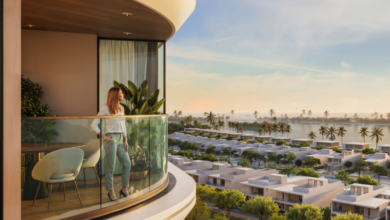How To Create A Website That Is Eye-Catching And Actually Engages Visitors

In a congested online market, having a visually appealing website is crucial to sticking out. A well-designed website draws in visitors and turns them into devoted patrons. Regardless of whether you are operating a blog, an e-commerce shop, or a company website, your website is the first point of contact with prospective customers. Making a design that is both aesthetically pleasing and useful while also grabbing the attention of your audience is essential. What is the process for creating a website that makes an impression? To get you started, here are some professional pointers.
1. Recognize Your Audience
Prior to starting the design process, you must determine who your target audience is. Speaking their language, meeting their requirements, and living up to their expectations are all characteristics of a website that appeals to users. Get to know the demographics, inclinations, and problems of your audience first. Are they young professionals seeking a slick, contemporary design, or are they an older audience that values an easy-to-use interface? The whole design process will be guided by your audience’s tastes, guaranteeing that your website will appeal to them.
See also: Building a Culture of Security: How Organizations Can Foster Awareness
2. Put User Experience (UX) First
Being visually appealing is just one aspect of an eye-catching website; another is the experience that users enjoy when interacting with it. Developing a user-friendly and smooth navigation system is the main goal of user experience (UX) design so that users may locate what they’re searching for without becoming frustrated. If your website has a clear call to action (CTA), legible fonts, and the right amount of space, users are more likely to stay on it longer.
More than half of all online traffic now originates from mobile devices, so be sure your website is adaptable. A responsive web design company allows users on smartphones and tablets to have a seamless experience by adjusting to different screen sizes.
3. Pick The Appropriate Color Scheme
Colors are essential for establishing the mood of your website and arousing feelings in your viewers. The psychological effects of various hues vary; red generates urgency, green symbolizes progress, and blue may foster trust. To make your website stand out, use colors that complement your business’s identity and core values and provide a striking contrast.
To prevent visitors from being overwhelmed by the design, keep the color scheme to a palette of three to five basic hues. For a unified design, use these colors sparingly in your buttons, photos, text, and background.
4. Put Quality Content First
If a website’s material is poor, it will not function properly. Your website has to contain excellent, pertinent, educational, and captivating material if you want to really grab your audience’s attention. Prioritize producing content that adds value and responds to your audience’s queries. Blog entries, movies, infographics, or client endorsements might all be examples of this.
Make sure your material is also simple to read. To make lengthy paragraphs easier to read, use headings and subheadings, and incorporate bullet points. Good content not only attracts readers but also helps with SEO and improves your site’s rankings.
5. Make A Quality Image Investment
Graphics and images may greatly improve your website’s appearance and feel. Select well-taken photos that are appropriate for your business and sector. Make sure the pictures you use, whether they are stock photos or original artwork, are sharp, clear, and well-matched to your overall design.
Incorporating images such as symbols, pictures, and videos may help increase user engagement since they give your website personality and break up text-heavy pages. However, take care not to overcrowd your website with photos since this might negatively impact user experience by slowing down load times.
6. Keep Things Easy
Despite the temptation to utilize them, simple designs and effects are often more successful. A website with too many parts might confuse users and detract from your business’s message. Your content, goods, or services should be the main emphasis of your minimalist design.
Make strategic use of whitespace to emphasize critical statements or call-to-actions and to produce a clean layout. A minimalistic layout guarantees that your website will continue to be user-friendly and won’t overwhelm visitors.
In Conclusion
Combining usability, aesthetics, and user experience results in a visually appealing website. Understanding your target demographic, giving UX design first priority, picking the ideal color scheme, and investing in top-notch graphics and content can all help you build a website that really grabs visitors’ attention. Collaborating with a seasoned web design firm can elevate your website, guaranteeing that it stands out in the crowded digital market.




